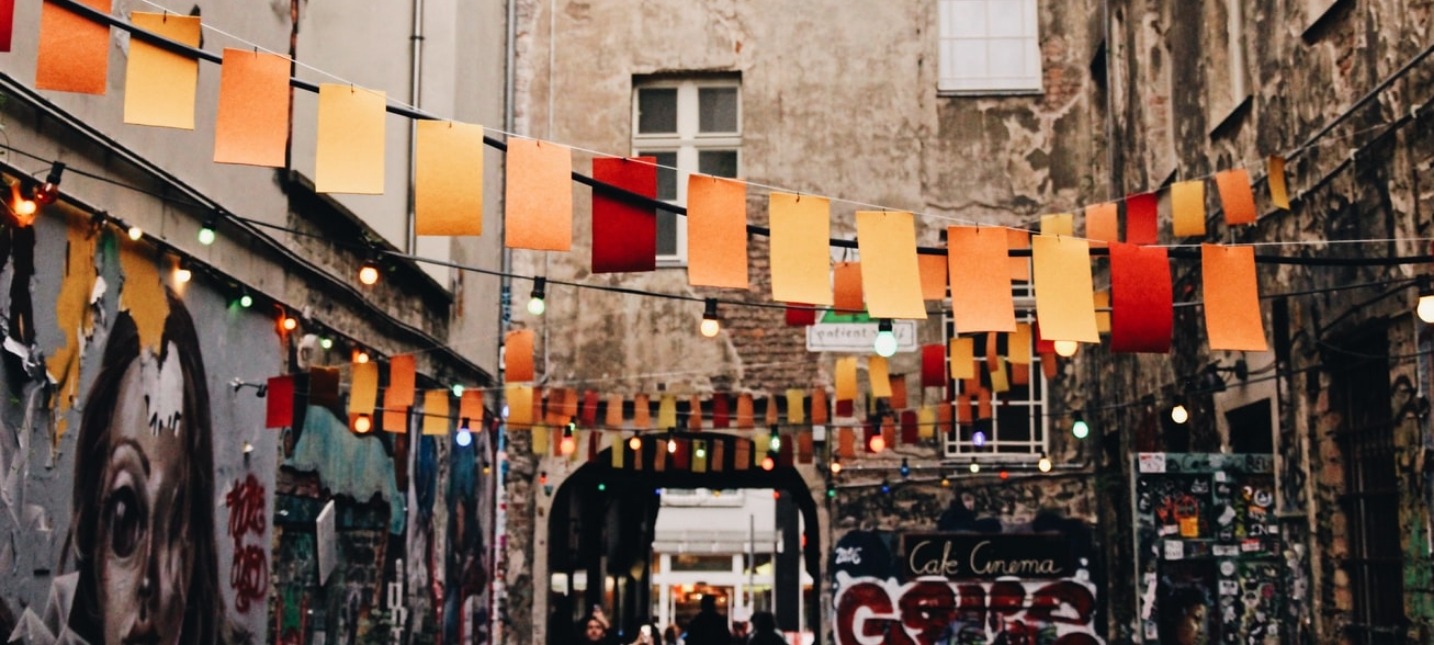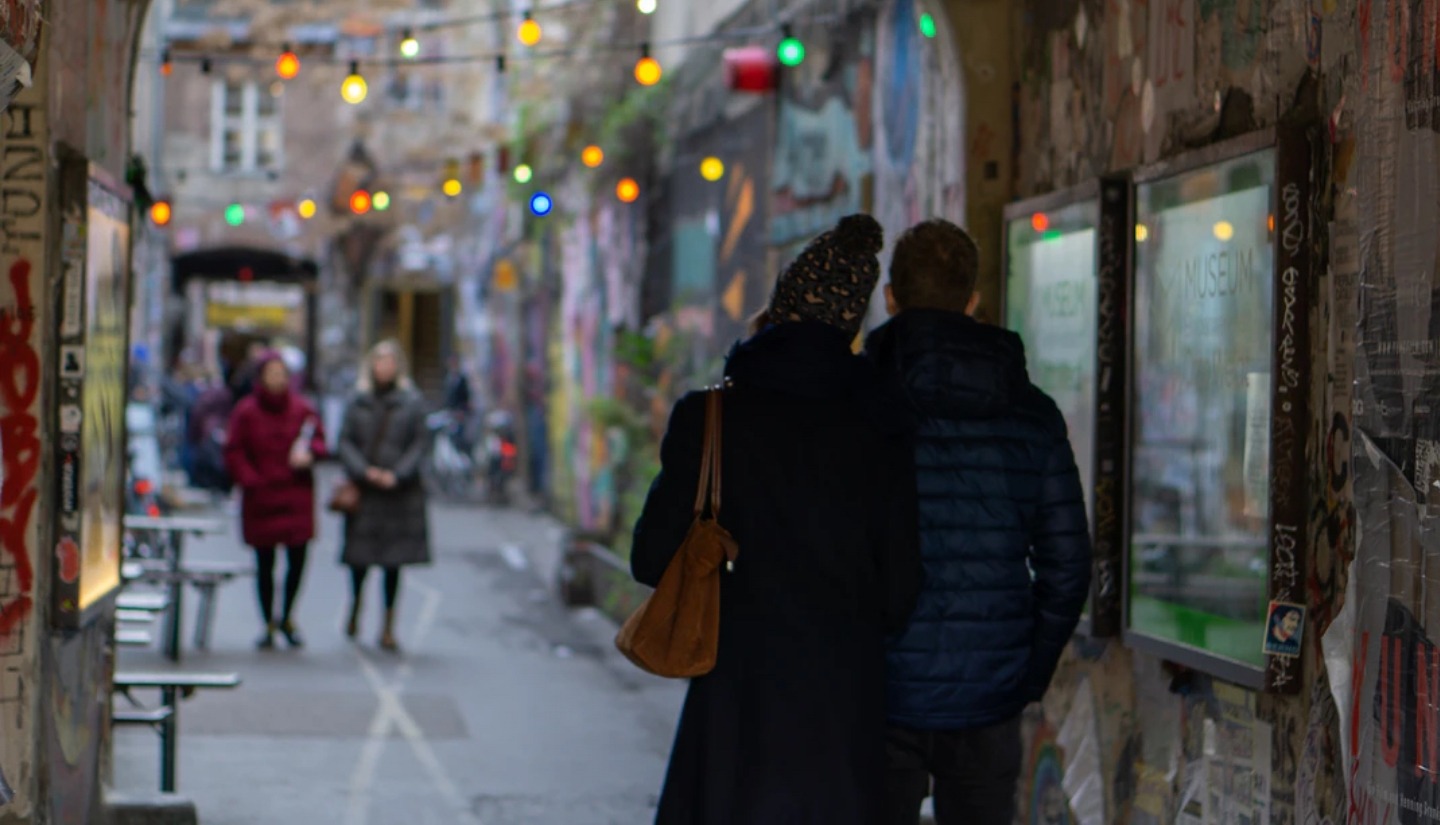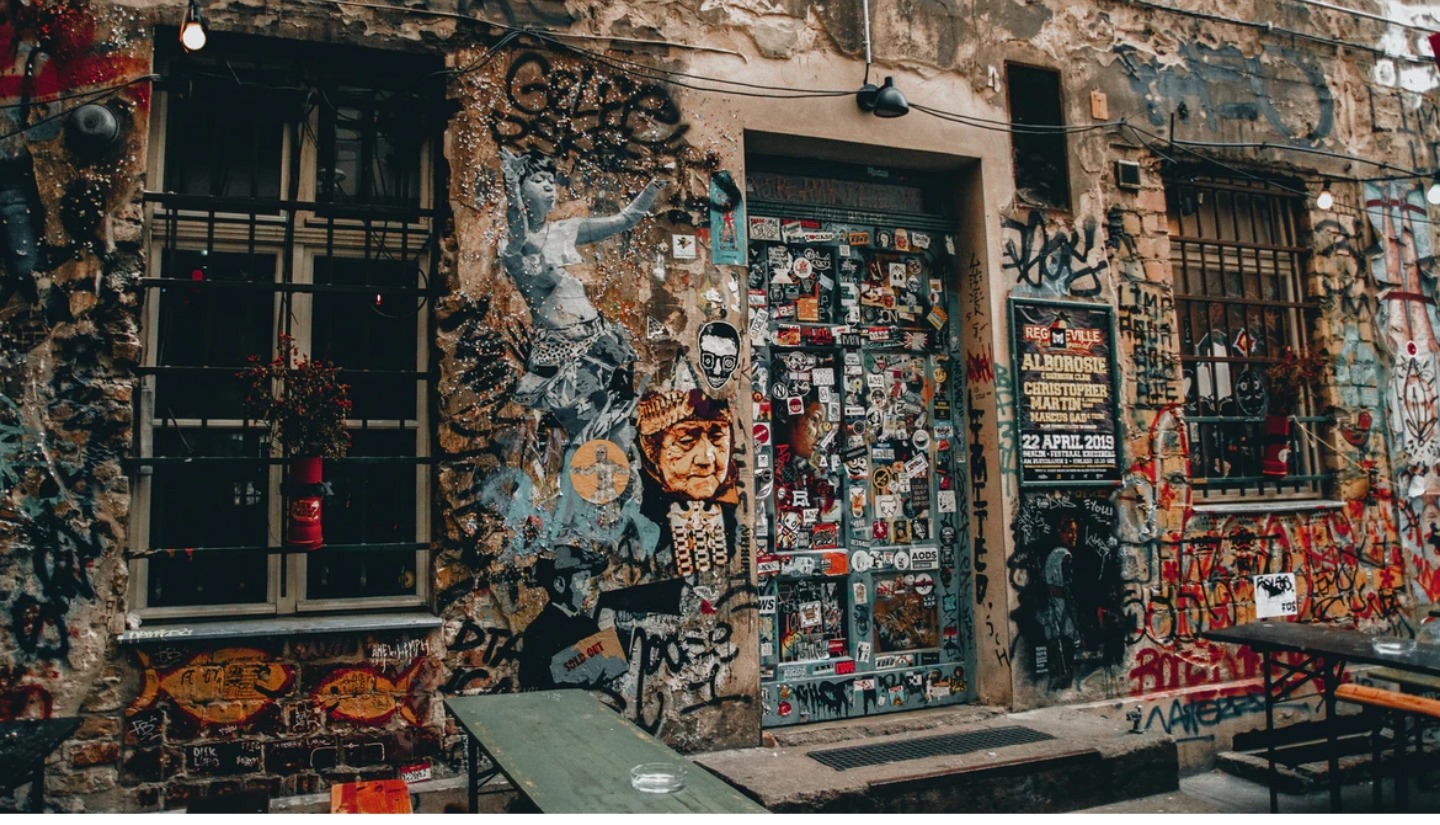In the middle of the Berlin jungle

The courtyard at Haus Schwarzenberg is tucked away next to the Hackesche Höfe. Whoever enters it feels transported back to the wild years of the Wende era
It is not only beautiful facades and streetscapes, but above all its backyards that make Berlin so lively. Behind the street-facing showcase buildings, they often extend far into the housing blocks. In the former working-class neighborhoods of Prenzlauer Berg or Wedding, many courtyards are now green and lovingly tended. Stores, gardens and social facilities make them focal points of urban life in the neighborhoods. At the same time, they still give an idea of how cramped life must have been in the tenements of the 19th century.
In Berlin Mitte, some magnificent inner courtyards were created that to this day link life and work, commerce, trade and housing. Many of these representative complexes have made the leap into modern times. The Hackesche Höfe, for example, but also the Heckmann Höfe or the Rosenhöfe bustle with life in the center of the city while at the same time offering the seclusion of quiet residential areas.
The courtyard at Haus Schwarzenberg seems to have fallen out of time
The courtyard at Haus Schwarzenberg, which is somewhat hidden next to the main entrance to the Hackesche Höfe, is different. The small ensemble with its elongated L-shaped courtyard at Rosenthaler Straße 39 still looks as if it has fallen out of time. To this day, its tenants regard the ensemble as "a testimony to German history and a lively place of international creative subculture," according to the website of the supporting association.
The complex at Rosenthaler Straße 39 dates back to the second half of the 19th century and served as a factory and residential building for a long time. This was very typical for the Spandauer Vorstadt, which was known for its narrow streets and the poverty of its residents. It was not until the beginning of the 20th century that the neighborhood was partially modernized: That's when buildings like the Hackesche Höfe, the Babylon cinema or the Volksbühne were created.

A center of Jewish life in Berlin
The Spandauer Vorstadt was also a center for Jewish life. Nearly 300 Jewish institutions – synagogues, schools, public institutions, clubs and kosher restaurants – existed here before the Nazis seized power.
In 1940, brush maker Otto Weidt began making brooms and brushes at 39 Rosenthaler Strasse, employing more than thirty blind or deaf Jewish people. Because the brooms and brushes were also supplied to the Wehrmacht, the workshop was considered "important for defense." Therefore, Otto Weidt for a while was able to hide or save his employees from deportation.
After the war, the workshop continued to exist until 1952. Later, the Deutsche Film AG, DEFA, maintained a branch office in the house. In the following years, the ensemble slowly fell into disrepair. It was not until the fall of the Berlin Wall that the complex, like the entire Spandauer Vorstadt, awoke from its slumber to new life.

The transition in the Spandauer Vorstadt
In 1995, the West Berlin artist group "Dead Chickens" moves into the then empty building together with other artists and cultural workers. The artists give it a new name: It is now called Haus Schwarzenberg, after a novel by GDR writer Stefan Heym about a small grassroots democratic republic in the Erz Mountains, right after World War II. But while the real Schwarzenberg only existed for a few weeks, the Haus Schwarzenberg association is able to use the building for the long term. In 2004, the Berlin Senate, with the help of the federal government, buys the ensemble, which the Haus Schwarzenberg association then rents.

Today, Rosenthaler Straße 39 is still a hub full of history, and of stories: the Museum Blindenwerkstatt Otto Weidt is located here. It is also home to an Anne Frank Center – although the girl never visited Berlin – with events and exhibitions. In addition, the Central Kino, the Café Cinema, the club "Eschschloraque Rümschrümp," founded in 1995, and the Neurotitan gallery defy time. Graffiti, colorful street art and the crumbling plaster of the last century create a unique atmosphere here. For brief moments, the jungle of Berlin in the 1990s comes alive again.

